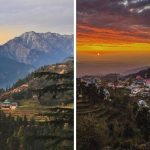Delhi whispers a rich history, its monuments standing as testaments to bygone eras. Yet, beneath the grandeur of Mughal forts and the serenity of Qutub Minar, lies a hidden world – a tapestry woven with the threads of Sufism. Here, nestled amidst bustling streets and serene gardens, reside the Dargahs – the shrines of Sufi saints who once walked these very grounds. These aren’t just tombs; they are vibrant centres of spirituality, where the soulful strains of qawwali music stir the soul and the scent of rose petals hangs heavy in the air.
Sufism, with its emphasis on love, devotion, and spiritual ecstasy, left an indelible mark on Delhi’s cultural landscape. Sufi saints, revered for their piety and wisdom, became spiritual guides and community pillars. Their final resting places, the Dargahs, transcended the boundaries of religion, attracting devotees from all walks of life.
Embark on a journey with us as we unearth these mystical abodes and discover the enduring legacy of Delhi’s Sufi saints.
The 22 Sufi saints of Delhi sultanate
Here is a select list of Delhi’s 22 Sufi masters.
Hazrat Qutubuddin Bakhtiyar Kaki
Hazrat Shamsulddin Aarfin Turkmaan Shah Bayabani
Bibi Fatima Sam
Hazrat Qazi Hamiduddin Nagori
Hazrat Sheikh Abu Bakr Tusi Haidari aka Matka Peer
Hazrat Sheikh Najibuddin Mutwakil Chisti
Hazrat Sayed Badruddin Shah Samarkandi
Hazrat Sheikh Shamsuddin Auttadullah “Patte Shah” aka Utaawla
Hazrat Sheikh Shahabuddin ‘Ashiq Allah’
Hazrat Sheikh Nizamuddin Auliya
Hazrat Amir Khusrow
Hazrat Sheikh Imaduddin Ismail Firdousi
Hazrat Sheikh Najibuddin Firdousi
Hazrat Sheikh Salaahuddin Dervesh
Hazrat Sheikh Alaama Kamaaluddin
Hazrat Sheikh Nasiruddin Chirag-e-Dehlvi
Hazrat Sayyid Mahmud Bahaar
Hazrat Sheikh Jalaluddin Chisti
Hazrat Maulana Sheikh Jamali Kamboh
Hazrat Sheikh Alauddin
Hazrat Khwaja Baqi Billah Shah
Hazrat Sheikh Abdul Haq Muhadhis Dehlvi
Following the Path of Sufi Saints
Sufism, the mystical heart of Islam, flourished in Delhi during the Delhi Sultanate (1206-1526). Sufi saints, known as Sufis, were not just religious scholars but also poets, musicians, and social reformers. They preached love, tolerance, and a direct connection with the divine. Their message resonated with people from all walks of life, creating a unique spiritual landscape in Delhi.
The Abode of Divine Love: Dargah of Qutubuddin Bakhtiyar Kaki
Our exploration begins at the Dargah of Hazrat Qutubuddin Bakhtiyar Kaki, a 13th-century Sufi saint revered for his piety and miracles. Nestled in the heart of Mehrauli, the complex exudes a sense of tranquility. Sunlight filters through the intricate jaali work, casting dancing patterns on the marble floors. Here, devotees whisper prayers and light incense, seeking blessings from the revered saint. Legend has it that Mughal emperor Akbar, childless for many years, found solace at this Dargah and was later blessed with a son.
The Shrine of the Beloved: Dargah of Hazrat Nizamuddin Aulia
From Mehrauli, we journey to the heart of Nizamuddin Dargah, a sprawling complex dedicated to Hazrat Nizamuddin Aulia, one of the most celebrated Sufi saints of Delhi. As you enter the gates, a palpable sense of devotion washes over you. Qawwali music fills the air, its soulful melodies transporting you to a realm of spiritual ecstasy. Sufi dervishes twirl in a mesmerizing dance, their movements symbolizing their longing for the divine. Nizamuddin Dargah is not just a shrine; it’s a microcosm of life itself, bustling with pilgrims, vendors selling prayer offerings, and pigeons fluttering around the intricately carved white marble tomb.
The Lamp of Delhi: Dargah of Hazrat Nasiruddin Chirag-e-Dehlvi
A short walk from Nizamuddin Dargah lies the serene abode of Hazrat Nasiruddin Chirag-e-Dehlvi, a 14th-century saint known for his wisdom and humility. Unlike the grandeur of Nizamuddin Dargah, Chirag-e-Dehlvi’s shrine embodies a sense of quietude. Here, amidst the verdant gardens, you can find solace in prayer or simply soak in the serene atmosphere. Legend has it that once, a visitor questioned the simplicity of the shrine compared to Nizamuddin Dargah’s grandeur. Chirag-e-Dehlvi is said to have replied by lighting a lamp, stating that true illumination comes from within.
The Melodious Mystic: Dargah of Hazrat Amir Khusro
Our exploration takes a detour from the traditional Sufi shrines to the tomb of Hazrat Amir Khusro, a 13th-century poet, musician, and scholar. Credited with introducing new musical styles to India, Khusro’s legacy transcends religious boundaries. His tomb, located near Nizamuddin Dargah, is a simple structure, yet it resonates with the echoes of his soulful poetry and innovative music.
The Hidden Oasis: Matka Peer Dargah of Hazrat Sheikh Abu Bakar
Tucked away in a narrow lane near Jama Masjid lies the enchanting Matka Peer Dargah, dedicated to Hazrat Sheikh Abu Bakar, a 17th-century Sufi saint. This hidden gem is unlike any other Dargah in Delhi. The shrine itself is a large earthenware pot (matka), symbolizing the saint’s simple and detached way of life. Devotees tie colorful threads to the matka, seeking blessings and expressing their wishes. The tranquil atmosphere and unique architecture make Matka Peer Dargah a haven for those seeking a spiritual escape amidst the bustling city.
Treasures Beyond the Shrines
These Dargahs are not just historical sites; they are vibrant communities. Every Thursday evening, qawwali nights come alive, filling the air with music and devotion. Langars, community kitchens, offer free meals to all, reflecting the Sufi spirit of hospitality.
A Journey Through Time
Unearthing Delhi’s Dargahs is a journey through time, a chance to connect with the city’s rich spiritual heritage. As you explore these mystical abodes, you’ll encounter not just tombs but living testaments to the enduring legacy of Sufism. The echoes of qawwali, the fragrance of rose petals, and the whispered prayers create a unique atmosphere that transcends religion and time. So, step away from the usual tourist trail and embark on this spiritual adventure. Delhi’s Dargahs await, ready to unveil their hidden treasures.







